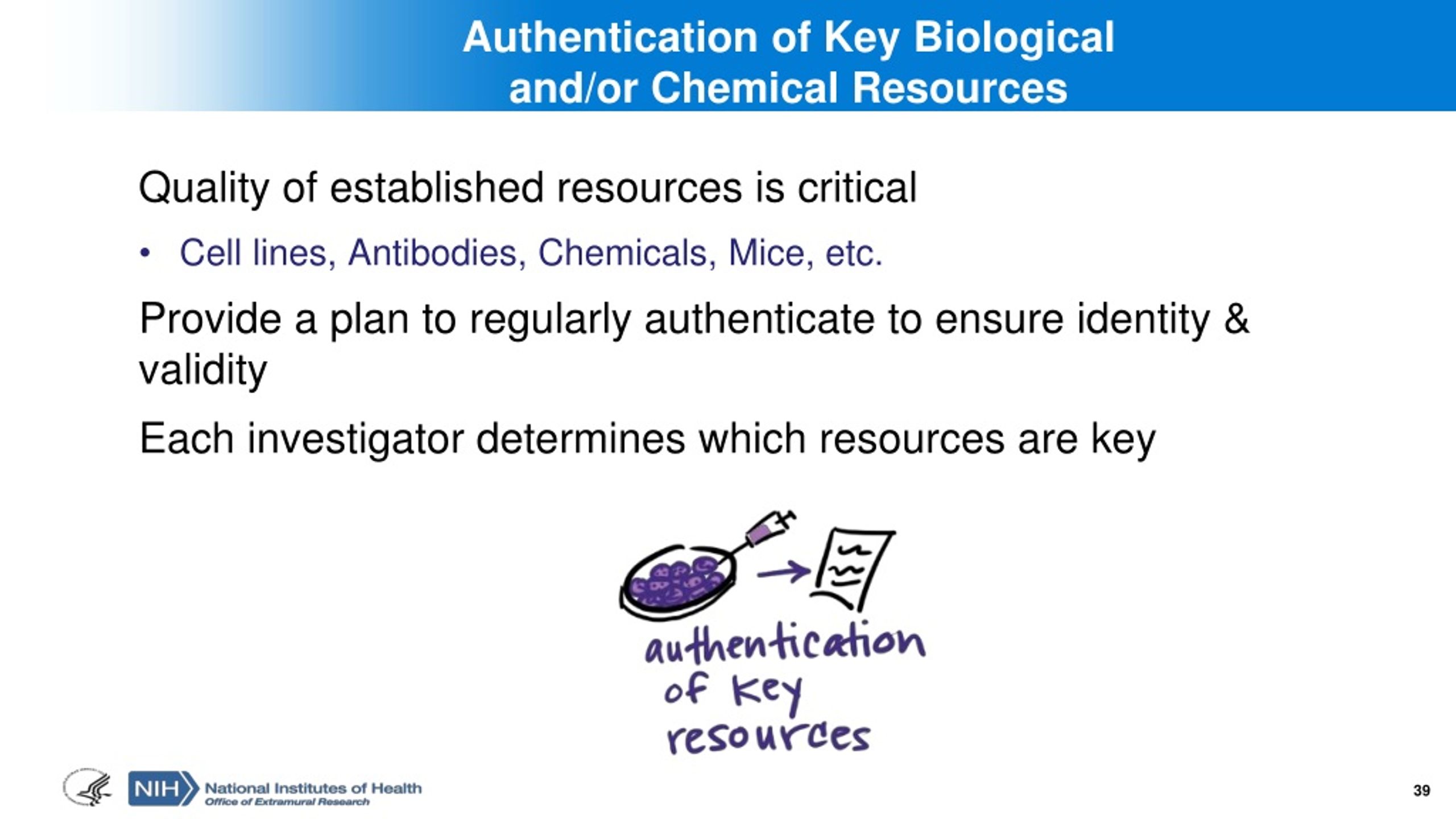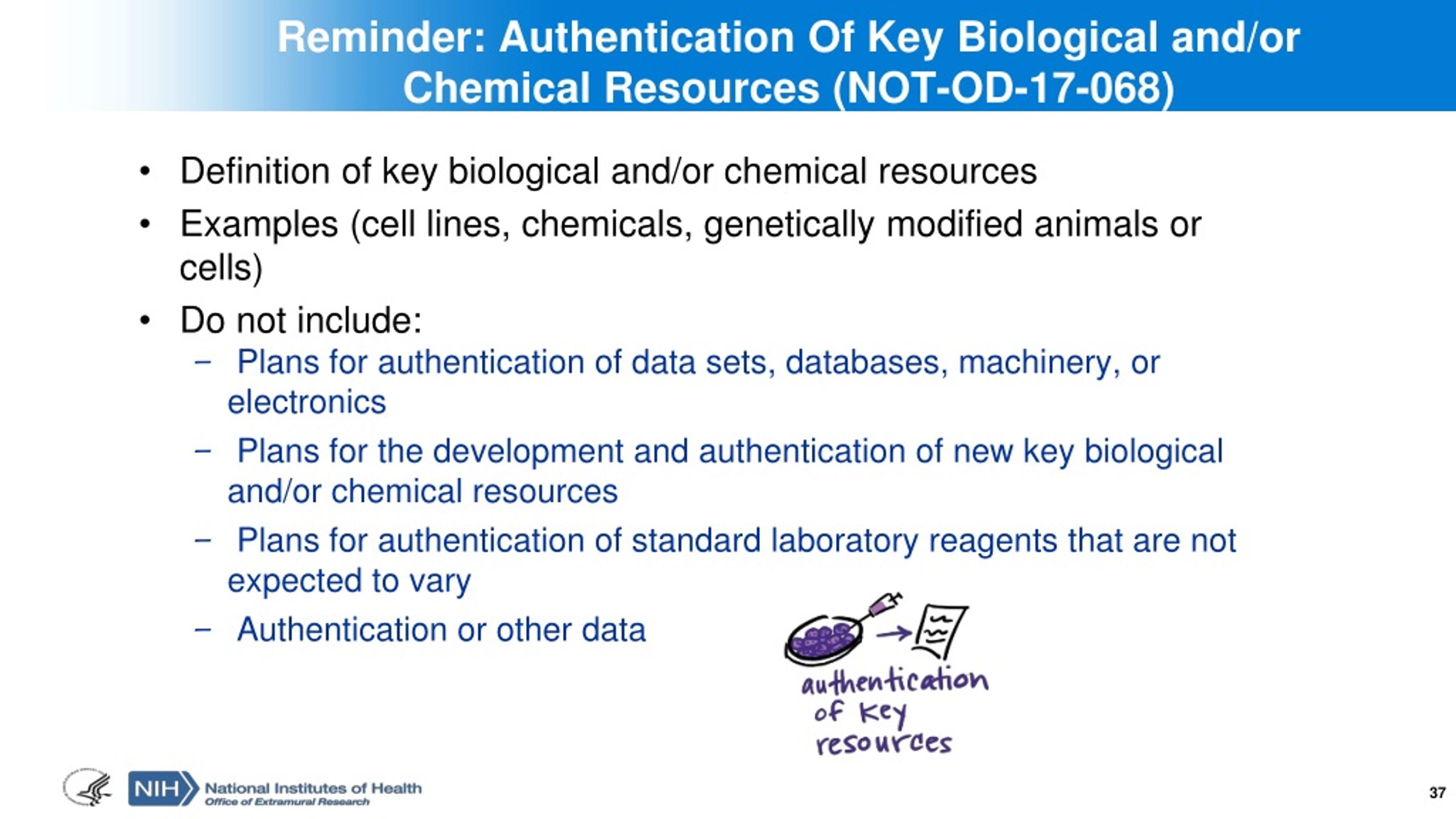Authentication Of Key Biological And Or Chemical Resources

The integrity of scientific research and the efficacy of critical applications hinging on biological and chemical resources are facing an escalating threat. A silent crisis is brewing within laboratories and industries worldwide: the widespread misidentification, contamination, and outright falsification of key resources, undermining decades of work and potentially endangering public health and safety.
At the heart of this escalating issue lies the authentication of key biological and chemical resources. This refers to the rigorous process of verifying the identity, purity, and characteristics of materials used in scientific experiments, diagnostic testing, and pharmaceutical development. Failure to properly authenticate these resources can lead to flawed research findings, inaccurate diagnoses, and the production of ineffective or even harmful products. The problem, though pervasive, remains largely unaddressed, shrouded by a lack of awareness, inadequate funding, and the absence of standardized authentication protocols across various sectors.
The Scope of the Problem
Studies have revealed alarming rates of misidentified and contaminated cell lines, for example. A 2021 report published in the journal Nature highlighted that over 30% of commonly used cell lines are either misidentified or contaminated with other cell types, rendering countless experiments based on these lines questionable. This contamination extends beyond cell lines. It impacts a wide array of resources, including antibodies, plasmids, and chemical reagents.
The repercussions of using unauthenticated resources are far-reaching. In basic research, unreliable reagents can lead to incorrect conclusions, wasted resources, and the propagation of flawed data within the scientific literature. In clinical settings, inaccurate diagnostic tests due to contaminated reagents can result in misdiagnosis, delayed treatment, and adverse patient outcomes. Moreover, the pharmaceutical industry faces the risk of developing ineffective or unsafe drugs based on unreliable chemical compounds or biological materials.
Antibodies: A Case Study in Authentication Challenges
Antibodies, critical tools in biological research and diagnostics, are particularly susceptible to authentication problems. A 2015 study in eLife demonstrated that a significant proportion of commercially available antibodies lack specificity, binding to unintended targets and generating false positive results. This lack of specificity arises from various factors, including poor manufacturing practices, inadequate validation testing, and the absence of clear antibody characterization standards.
Consequently, researchers often unknowingly use antibodies that produce misleading data, leading to flawed interpretations and wasted research efforts. Efforts are underway to improve antibody validation through initiatives such as the Antibody Validation Project, which promotes the use of orthogonal validation methods to confirm antibody specificity and reproducibility. However, widespread adoption of these methods remains a challenge.
The Need for Standardized Protocols
One of the key obstacles to ensuring resource authentication is the absence of standardized protocols and best practices across different disciplines and institutions. While some organizations, such as the American Type Culture Collection (ATCC), offer authenticated cell lines and reference materials, their use is not universally mandated. This inconsistency creates a landscape where researchers and manufacturers may opt for cheaper, unauthenticated resources, prioritizing cost over quality and reliability.
To address this issue, several initiatives are advocating for the development and implementation of standardized authentication protocols. The National Institutes of Health (NIH), for instance, has emphasized the importance of resource authentication in grant applications, requiring researchers to describe the methods used to verify the identity and purity of key resources. However, more comprehensive guidelines and enforcement mechanisms are needed to ensure widespread compliance.
Technological Advancements in Authentication
Fortunately, technological advancements are providing powerful tools for resource authentication. Next-generation sequencing (NGS), for example, allows for rapid and accurate identification of cell lines and microbial strains based on their unique genetic fingerprints. Mass spectrometry techniques can be used to characterize the composition and purity of chemical compounds and biological materials.
These advanced technologies offer the potential to revolutionize resource authentication, providing researchers and manufacturers with reliable methods for verifying the quality of their materials. However, the cost and complexity of these technologies can be a barrier to their widespread adoption, particularly in resource-constrained settings. Lowering the costs and increasing accessibility of these technologies are crucial steps in promoting resource authentication globally.
Addressing the Multifaceted Challenges
Solving the resource authentication crisis requires a multifaceted approach involving collaboration among researchers, funding agencies, regulatory bodies, and industry stakeholders. Greater awareness is needed to educate researchers about the importance of resource authentication and the potential consequences of using unauthenticated materials.
Increased funding for resource authentication initiatives is also essential, enabling the development and implementation of standardized protocols and the validation of commercially available resources. Regulatory bodies, such as the Food and Drug Administration (FDA), play a crucial role in enforcing quality standards for products used in clinical settings and pharmaceutical development, ensuring that these products are manufactured using authenticated resources.
"The lack of resource authentication is a systemic problem that undermines the credibility of scientific research and jeopardizes public health," states Dr. Emily Carter, a leading researcher in cell biology.
Industry stakeholders, including manufacturers of reagents and diagnostic tests, have a responsibility to ensure the quality and authenticity of their products. Transparency in manufacturing processes and rigorous validation testing are essential steps in building trust and ensuring the reliability of these resources.
Looking Ahead: A Call for Action
The authentication of key biological and chemical resources is not merely a technical issue; it is a fundamental pillar of scientific integrity and public safety. Failing to address this issue will continue to erode the reliability of research findings, compromise diagnostic accuracy, and jeopardize the development of safe and effective therapies. A concerted effort is needed to raise awareness, develop standardized protocols, and invest in advanced authentication technologies.
By embracing a culture of quality and transparency, the scientific community can safeguard the integrity of its work and ensure that the benefits of scientific progress are realized for the benefit of all. The time for action is now, to safeguard the future of scientific discovery and protect the health and well-being of society.








.jpg)









